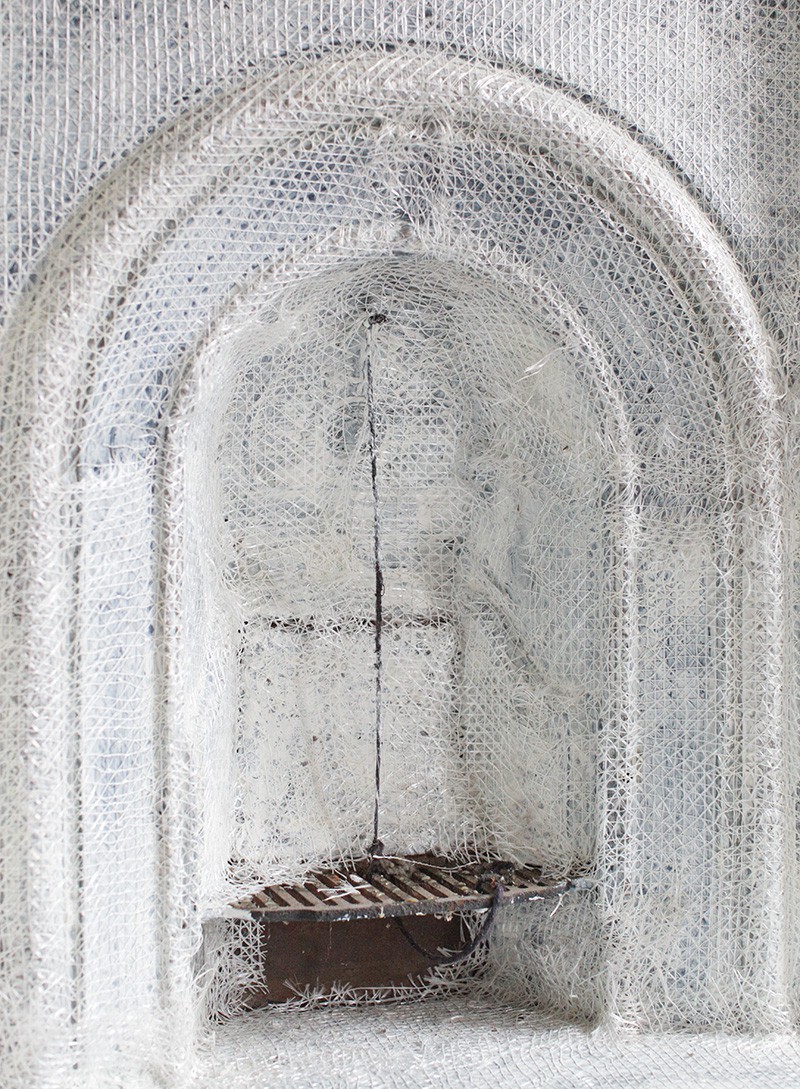The concealed and revealed interiors of Google Street view
#negated RESEARCH
Abstract
This paper explores the nature of the hidden interior as revealed through the gaze of Google Street View (GSV). Using fictional writing as an analytical device, it forensically investigates the scenes captured on GSV to uncover clues of hidden narratives and imagined interiors. The paper exposes GSV’s ability to alter our perception of hidden interiors as it simultaneously reveals and conceals the nature of those hidden spaces, both physically and metaphorically.
“Space is what arrests our gaze” [1]
By now, we are all familiar with Google Street View (GSV) as a navigational tool, and even as an observational device that offers us a seductive, omnipotent and spectacular view of the world. We exploit GSV as a means of travelling through its countless scenes and spaces across the globe. The tool’s navigational design attempts to mimic our natural movement; we move the cursor to “look around” and “step” through spaces, enhancing the illusion of truly experiencing places through our screens. GSV turns us into the ultimate voyeurs: all seeing, yet never seen. Michel De Certeau refers to the exhilaration of viewing a city from above as tapping into our “lust to be a viewpoint and nothing more.” [2] To me, the digital gaze created by GSV takes this notion a step further, by evoking the most common of childhood fantasies: to fly, to be invisible, to see through walls, to travel back in time.
GSV allows us to experience and “move” through spaces in the city as though they are frozen in time, revealing peculiar details which often pass us by in the motion of daily life. It turns us from observers to detectives as we search for clues within its scenes that may uncover hidden narratives. Yet GSV also confronts us with new kinds of invisibility, contained within its glitches and indiscernible blurs. Much like our own vision, GSV also has its edges and limitations. Movement through the device is often more mechanical than natural: jolt by jolt we lurch along streets regularly encountering glitches. It is bound by the limitation of the technology used to capture it, and the places those capturing it chose to record – and to hide. In this, the image of the city offered by GSV can conceal as much as it reveals.
Hidden Narratives
The limitations of GSV trace the boundary between what is visible and hidden through this device. We can only see the daytime; the night-time remains hidden from view. The blurs and glitches leave us in suspense about what may be revealed behind them. We can only enter the interiors that Google has captured, and are denied access to those it chose to hide—whether intentionally or through necessity.
What follows is a short story that explores through language the ‘edges’ and limitations of GSV. The approach to this story is investigative, analytical and at times, fictitious. GSV provides the mise-en-scène to this story, which is based entirely on images captured through it. Language becomes the tool with which to uncover clues in these images that will lead to a narrative. Story-making becomes a device that allows us to challenge our perception of reality as seen through GSV.
GOKYUZU & KERVAN RESTURANT
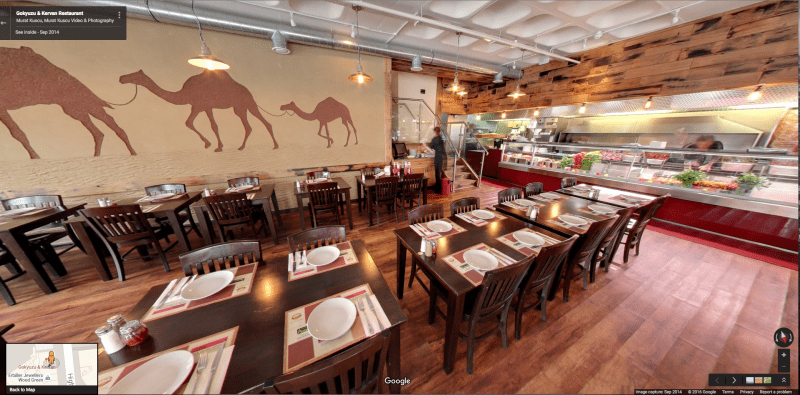
The last table was hastily wiped clean.
As she lay out the freshly topped up salt and pepper shakers the
only ones watching her were the camels. It doesn’t have to be
perfect, she reminded herself. Ordinary; not perfect. She mustn’t
give it away.
Frank was nervously fidgeting with the laminated menu stack
when George came out to the front kitchen.
“Turn on the lights, for god’s sake!” he bellowed, and without
hesitation began preparing the lamb.
Frank flicked the switch, glanced over, and in dismay noticed that
George was busy carefully dicing the lamb - using the exact same
knife.
She knew better than to say anything, so instead she rushed over
and busied herself lifting open the heavy steel shutters.
***
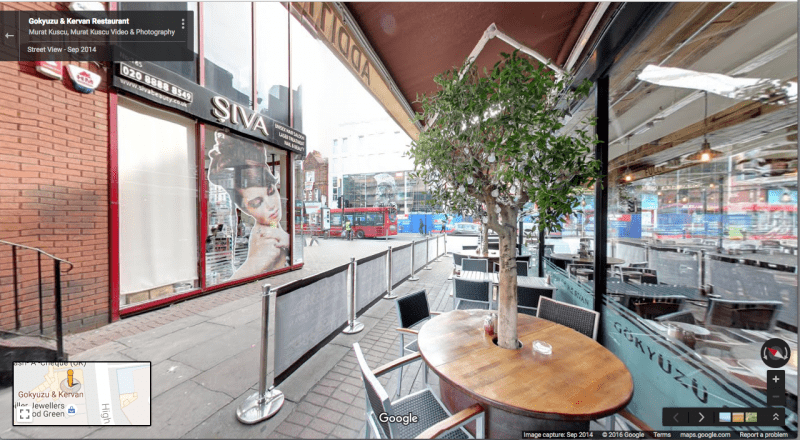
The High Road was beginning to fill with fast-paced early
morning shoppers, a street cleaner tediously interrupting their
strides. Frank gazed blankly at him, transfixed by the motions of his broom,
methodically sweeping up the evidence of last night.
***
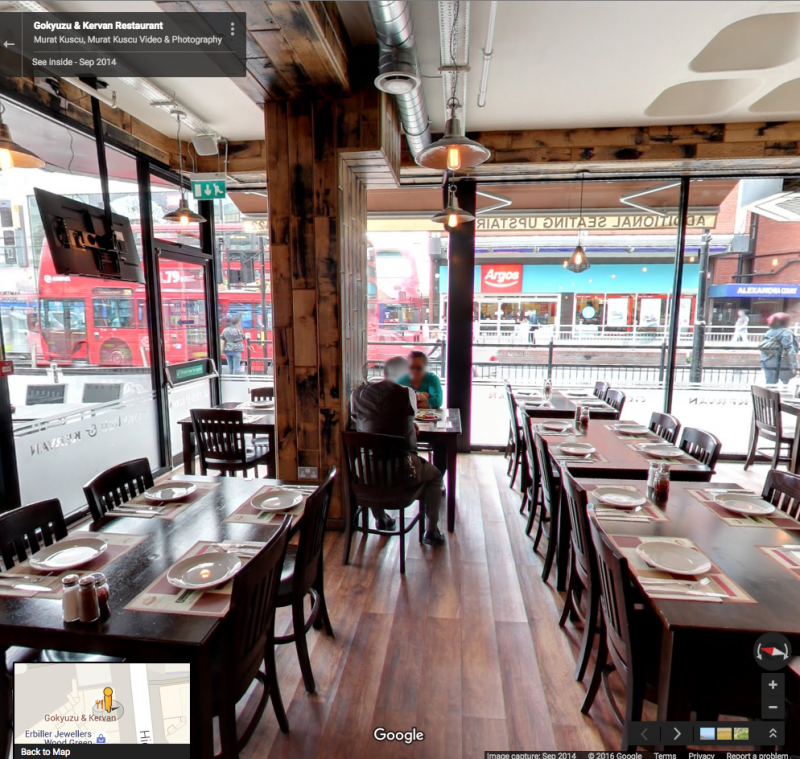
A long hour or more may have passed by before the morning’s first customers arrived.
A couple.
Mixed mezze platter to share, no drinks.
Their limited exchange seemed stilted, forced. They sat unsmiling.
She kept her sunglasses on throughout, despite sitting with her
back to the window. As he ate, his head moved with such vigour
it became a blur.
The minutes stretched,
the camels walked on.
***
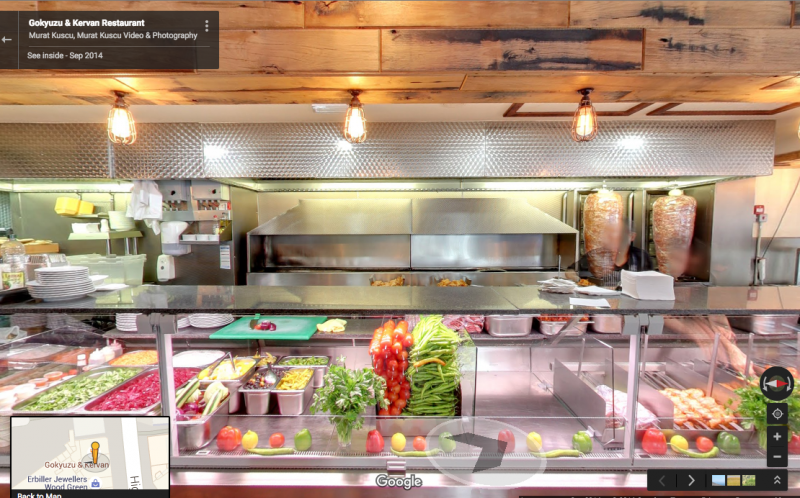
George got on with the prepping, he had to be quick - whilst it
had been a quiet morning he knew that the crowds would soon
swarm in.
He chopped: cucumbers, cabbage, red onions, parsley, coriander.
He sliced lemons.
He speared through tomato after tomato, chili after chili;
his skilful hands working fast, leaving his mind free to wander...
precisely what he had tried to avoid.
The kitchen boys messing around provided a helpful distraction;
they certainly bore the brunt of his temper today.
Yet even so, he couldn’t help the thoughts that came into his head
as he pierced the taut skin of a chicken’s thigh with his sharp
metal skewer, pushing it deep through the flesh.
***

A staircase is discovered,
and suddenly,
another room reveals itself.
***
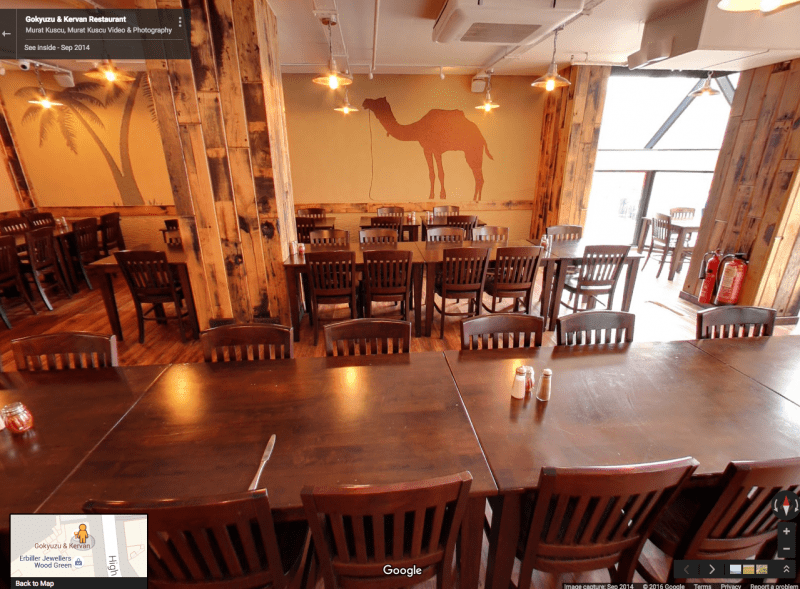
Tables and chairs in deep mahogany arranged like Tetris blocks,
gleaming; their surface tinted a bright sickly orange by the light
bulbs hung above. A lone camel estranged from his pack is gazing
deeply at a palm tree, his only companion.
A single knife laid out upon the table.
Has it been there all night?
Hidden Interiors
“On the screen objects that were a few moments ago sticks of furniture or books of cloakroom tickets are transformed to the point where they take on menacing or enigmatic meaning" [3]
The story above proposes the notion that the scenes captured on GSV hold the potential to document a crime scene. On the screen, peripheral spaces that we might otherwise overlook in the city are exposed in a way where everything within them gains potential import and significance. A forensic investigation of images captured on GSV reveals hidden dimensions within them, both physical and metaphorical in nature. Physical, in the sense that there are real barriers to our GSV gaze: spaces which we cannot enter, blurs and glitches which we cannot discern. But also metaphorical, as those concealed spaces leave room for the imagined interior to be encountered.
Through GSV we travel back in time, entering spaces that will be inevitably changed or even no longer exist in reality. While we are able to “move” through them digitally, we lose the experience of movement and the passage of time. We become one-sided observers of the scene, with no capacity to influence the environment around us. In this, GSV negates the essence of the interior as it prevents an exchange between it and ourselves. Consequently, we are not capable of truly experiencing the spaces as we would in reality, but in some ways this experience is no less valid and even arguably richer. Through dissecting the scene in suspended animation, we are free to pay attention to detail without the distraction that comes with movement and life. Thus, we gain access to these hidden dimensions which GSV reveals.
As was demonstrated in the story, any sense of movement contained in GSV is captured through its blurs and glitches - the diner whose head becomes a blur as he eats, the ghostly George chopping his vegetables with such vigour that he almost disappears. This creates a curious paradox where the thing that brings GSV most to life – movement - is also what highlights its mechanical nature the most. This resonates with Rosa Menkman’s description: “the glitch is the machine revealing itself” [4]. The archaic technology used to capture and display the world to us via GSV becomes exposed through a system of glitches, which in turn alter our perception of space.
Conclusion
As Louis Aragon notes, looking at objects on the screen reveals them in an enigmatic dimension. This effect is heightened through GSV as it allows us to “move” through interior spaces that we commonly walk through in daily life via the enigmatic lens of the screen. The uncanny, surreal effect is then further emphasised through a system of glitches which reveal GSV’s archaic technology. GSV thus operates as an omnipotent presence that freezes motion and time, and shapes our experience of the world. We are permitted to explore certain spaces through its lens, and are denied access to others. Yet despite this concealment, GSV captures a moment that may otherwise be overlooked or forgotten. It captures an interior that may otherwise remain hidden. The set of limitations which coalesce in GSV may conceal what we consider to be reality, but also enable a serendipitous encounter with a lost time and a lost space.

